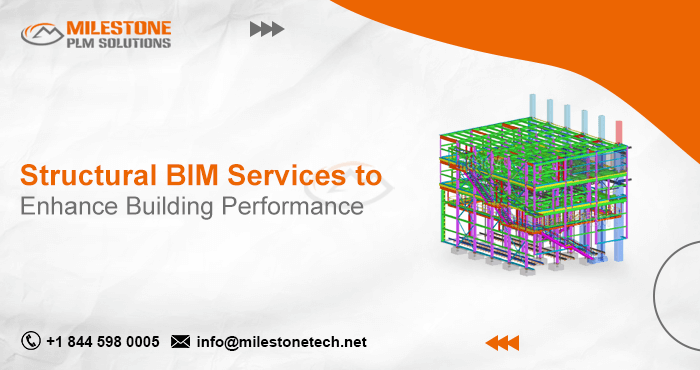Structural BIM Services to Enhance Building Performance

The construction industry is undergoing a significant transformation, driven by advancements in technology. Building Information Modeling (BIM) has emerged as a game-changer, revolutionizing the way buildings are designed, constructed, and managed. Structural BIM services, a specific subset of BIM, play a crucial role in optimizing building performance across various aspects. This article delves into how structural BIM services contribute to a more efficient, sustainable, and high-performing built environment.
What are Structural BIM Services?
Structural BIM services encompass the creation and utilization of intelligent 3D models that represent a building’s structural framework. These models go beyond mere geometry, incorporating detailed information about structural components, materials, and their properties. Structural engineers leverage specialized software to generate these models, enabling them to perform analysis, identify potential issues, and optimize designs for superior performance.
Enhancing Building Performance with Structural BIM Services
Structural BIM services offer a multitude of benefits that contribute to a building’s overall performance. Here’s a closer look at some key advantages:
- Improved Collaboration and Communication: A core tenet of BIM is the creation of a central information model accessible to all project stakeholders – architects, engineers, contractors, and facility managers. This fosters seamless communication and collaboration. Structural BIM services enable real-time clash detection, where potential conflicts between structural elements and other building systems (MEP – Mechanical, Electrical, and Plumbing) are identified early in the design phase. Addressing these clashes virtually eliminates costly rework and delays during construction.
- Enhanced Design Optimization and Efficiency: Structural BIM software allows engineers to perform simulations and analyses that evaluate a building’s structural integrity under various loading conditions. This data-driven approach empowers them to optimize designs by selecting the most efficient materials and configurations. The detailed information embedded within the BIM model facilitates accurate quantity take-offs and cost estimations, leading to better project budgeting and resource allocation.
- Reduced Rework and Improved Quality: Early clash detection, as mentioned earlier, significantly minimizes the need for rework during construction. Structural BIM models also promote design accuracy by providing a single source of truth for all structural information. This reduces errors and inconsistencies, leading to a higher quality final product.
- Sustainable Building Practices: Structural BIM services can be instrumental in achieving sustainable building goals. The ability to integrate green building practices into the design phase allows for the selection of eco-friendly materials and the implementation of features that enhance energy efficiency. BIM software can even perform life-cycle assessments to evaluate a building’s environmental impact throughout its lifespan.
- Facility Management and Lifecycle Benefits: The data-rich BIM model extends its value beyond construction. Facility managers can utilize the model for maintenance planning, space optimization, and future renovations. Structural BIM services contribute to a more efficient building lifecycle by providing a comprehensive record of the building’s structural components and their properties.
The Future of Structural BIM Services
As BIM technology continues to evolve, we can expect even greater advancements in structural BIM services. Integration with artificial intelligence (AI) and machine learning (ML) holds immense potential for automating tasks, further optimizing designs, and facilitating predictive maintenance. Additionally, the rise of cloud-based BIM platforms will enhance collaboration and accessibility, making structural BIM services even more efficient and cost-effective.
Conclusion
Structural BIM services are revolutionizing the way buildings are designed and constructed. By fostering collaboration, optimizing designs, and promoting sustainable practices, structural BIM services play a critical role in enhancing building performance across the entire project lifecycle. As technology continues to mature, we can expect even greater benefits for the construction industry and the built environment as a whole.
Follow Milestone PLM Solutions for AEC Industry Updates, CAD Tips and Global Construction News.
Milestone PLM Solutions with its exclusive delivery center in India is a global CAD, BIM outsourcing partner serving the needs of the AEC industry since 2004. MILESTONE focuses on the unique needs of clients and believe in tackling real-life problems with efficiency, smooth and ease.
The MILESTONE team can assist you with DD Set, CD Set, BIM Modeling, Rendering, walk through and more. We support multiple BIM software including AUTOCAD REVIT, Architecture cad, Cabinet Vison, Vector works etc. Our approach is to provide a dedicated team for each customer over ongoing project and deliver the quality output consistently.
With our state of art technology and large talent pool of Engineers & Architects, we are developing best in class solutions for our customers across the globe. We align with your culture and values to form unbreakable partnerships and are primed for success with over 100 employees and 150 customers in the US, Europe, India, and Asia.
You can email us at info@milestonetech.net and can log in to our website www. milestonetech.net to know more about our services and our work portfolio or contact us on +1-844-598-0005
